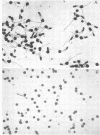Abstract
Short exposure of the spores of Cheilanthes farinosa to low intensity red light promotes their germination, which is not reversed by a subsequent exposure to far red light. Germination is, however, inhibited by blue light administered before or after red light. Inhibition of germination by blue light is annulled by exposure to a higher intensity of red light, and germination of the repromoted spores is inhibited by far red light. Mutual photoreversibility of germination is also observed in repromoted spores irradiated successively with far red and red light. Although germination appears to be basically under phytochrome control, it is postulated that the presence of a blue light-absorbing pigment interferes with phytochrome transformations in the spores.
Full text
PDF
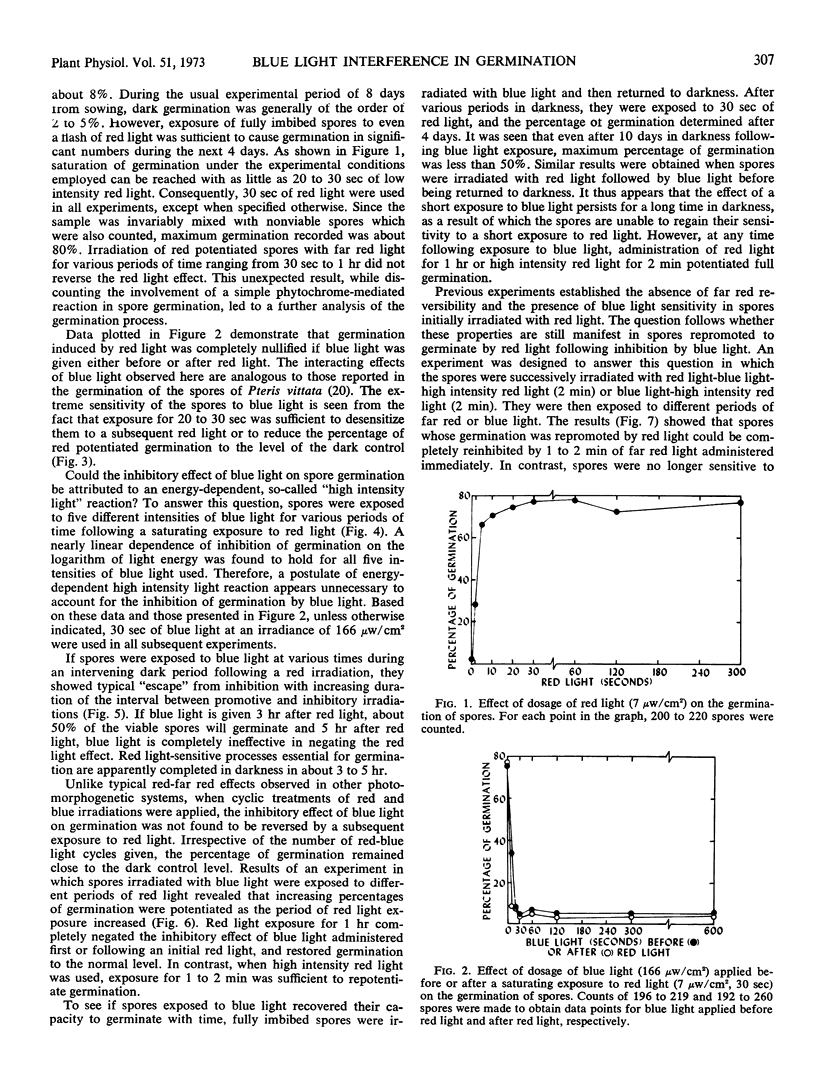
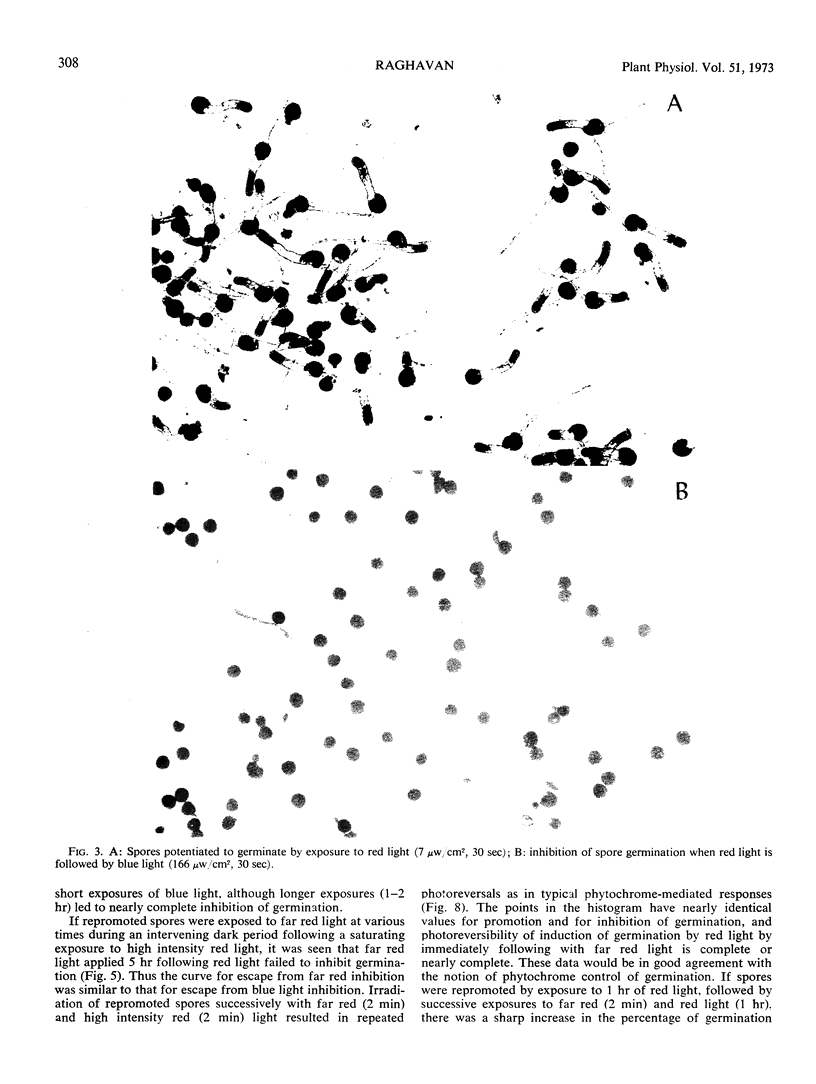
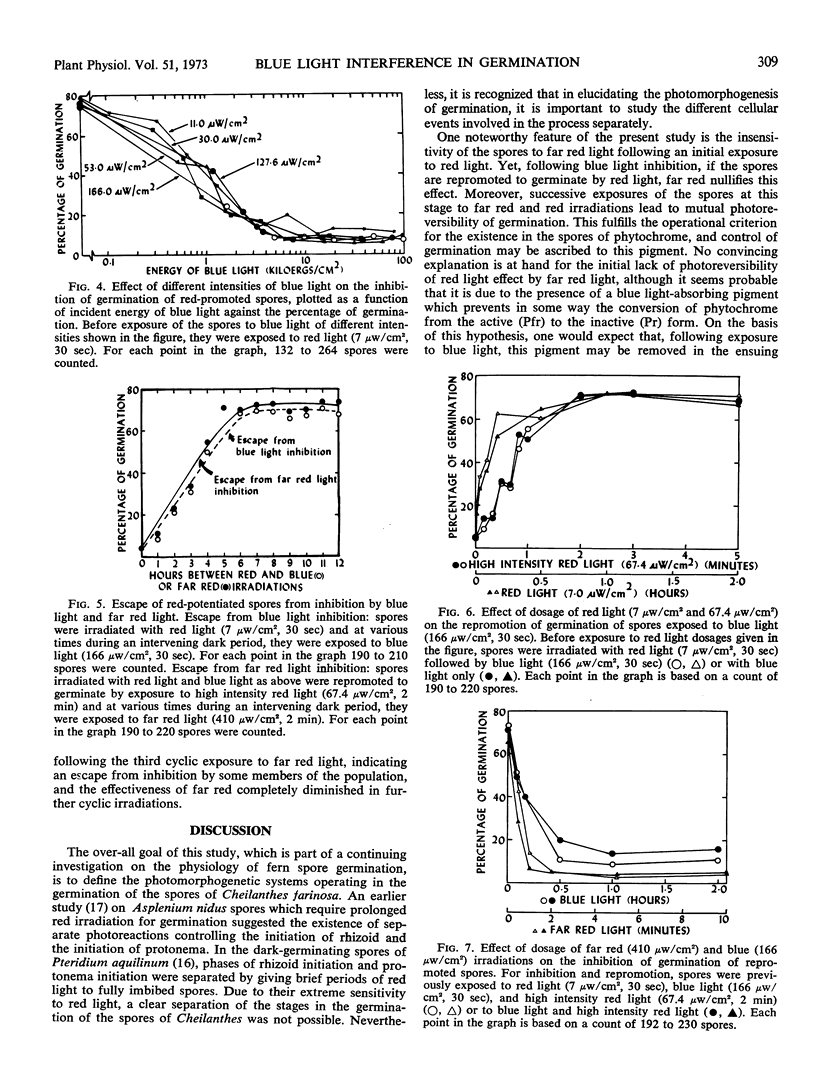
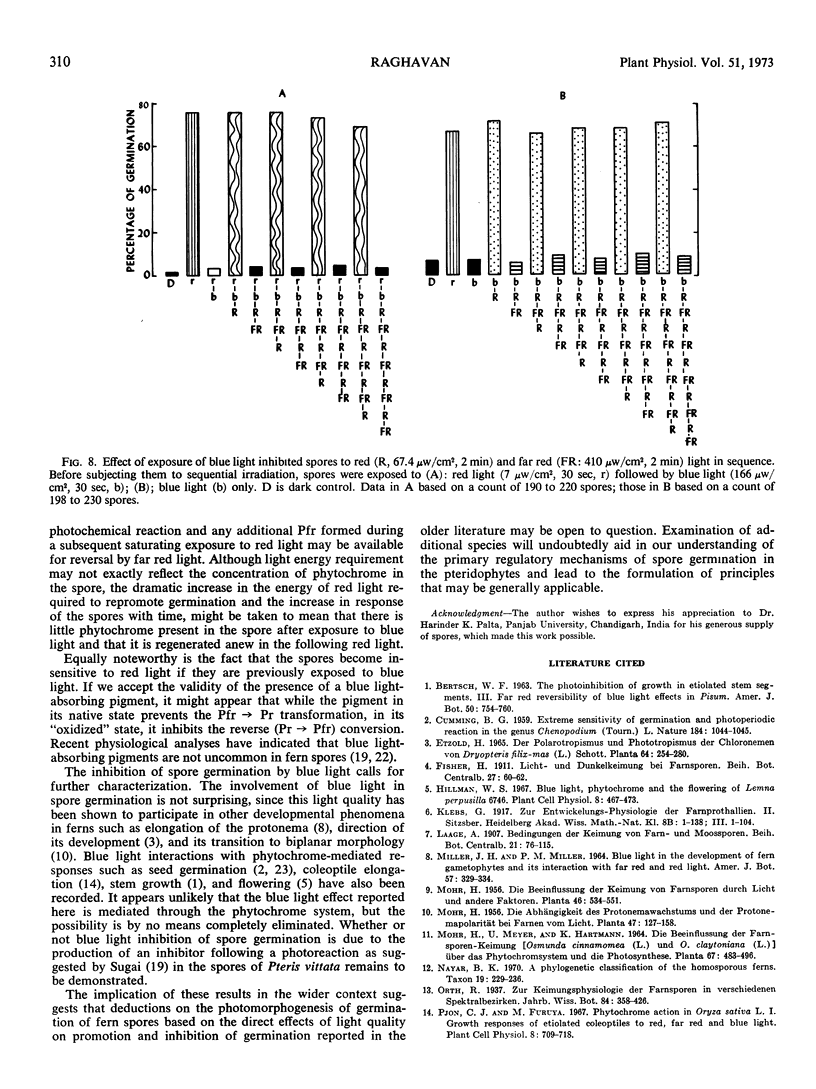

Images in this article
Selected References
These references are in PubMed. This may not be the complete list of references from this article.
- CUMMING B. G. Extreme sensitivity of germination and photo-periodic reaction in the genus Chenopodium (Tourn.) L. Nature. 1959 Oct 3;184:1044–1045. doi: 10.1038/1841044a0. [DOI] [PubMed] [Google Scholar]
- Raghavan V. Germination of bracken fern spores. Regulation of protein and RNA synthesis during initiation and growth of the rhizoid. Exp Cell Res. 1970 Dec;63(2):341–352. doi: 10.1016/0014-4827(70)90222-3. [DOI] [PubMed] [Google Scholar]
- Raghavan V. Phytochrome Control of Germination of the Spores of Asplenium nidus. Plant Physiol. 1971 Jul;48(1):100–102. doi: 10.1104/pp.48.1.100. [DOI] [PMC free article] [PubMed] [Google Scholar]
- Sugai M. Photomorphogenesis in Pteris vittata. 3. Protective action of ethanol on blue-light-induced inhibition of spore germination. Dev Growth Differ. 1970 Jun;12(1):13–20. doi: 10.1111/j.1440-169x.1970.00013.x. [DOI] [PubMed] [Google Scholar]



